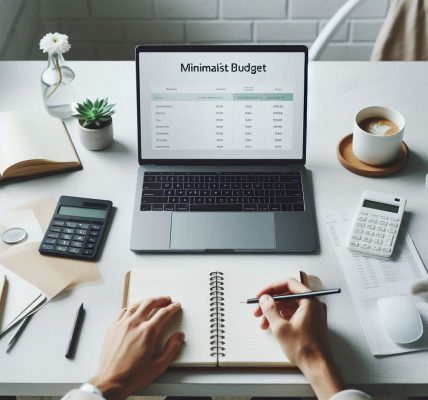Buying a home is one of the most significant financial decisions you’ll ever make. It’s not just about choosing the right property — it’s also about preparing your finances to ensure that you can afford it without compromising your other financial goals. Budgeting for a home purchase requires careful planning, disciplined saving, and understanding the various costs involved in buying a home.
In this blog, we’ll walk you through essential steps to budget for a home purchase and help you navigate the financial aspects of owning a home.
Step 1: Understand the Full Cost of Homeownership
When budgeting for a home, it’s crucial to consider not just the cost of the house itself, but all the additional expenses that come with homeownership. These costs can quickly add up and affect your monthly budget.
1.1 The Price of the Home
The price of the home is the most obvious cost, but keep in mind that the listing price might not reflect the final price you’ll pay. Factors like bidding wars, location, and market conditions can drive up the cost of the home. Your budget should include a buffer for possible price increases.
1.2 Down Payment
The down payment is typically the largest upfront cost you’ll face when buying a home. It’s usually expressed as a percentage of the home’s purchase price, ranging from 3% to 20% or more, depending on the type of loan you’re applying for. For example:
- Conventional Loans: These often require a 20% down payment.
- FHA Loans: These government-backed loans may allow you to put as little as 3.5% down.
- VA Loans: For veterans and service members, there may be no down payment requirement.
1.3 Closing Costs
Closing costs are fees that you’ll pay when finalizing the sale of the property. These can include:
- Lender fees
- Title insurance
- Home inspection fees
- Appraisal fees
Closing costs typically range from 2% to 5% of the home’s purchase price. Make sure to factor these into your overall budget.
Step 2: Calculate Your Monthly Mortgage Payments
Your mortgage payment is likely to be the largest monthly expense when you purchase a home. When calculating your mortgage payment, it’s essential to consider several key factors:
2.1 Principal and Interest
The principal is the amount you borrowed, and interest is the cost you pay to borrow that money. Your lender will give you a breakdown of your loan and the interest rates when you apply. It’s important to understand that the lower the interest rate, the less you’ll pay in interest over the life of the loan.
2.2 Property Taxes
Property taxes are often included in your monthly mortgage payment and are held in escrow by your lender. The amount can vary depending on your home’s location and its assessed value. On average, property taxes can range from 1% to 2% of the home’s value annually.
2.3 Homeowners Insurance
Homeowners insurance protects your property against damage, theft, and natural disasters. Most mortgage lenders require you to have homeowners insurance in place. The cost varies depending on the size, value, and location of your home, but you should expect to pay around $1,000 to $2,000 annually.
2.4 Private Mortgage Insurance (PMI)
If your down payment is less than 20%, your lender may require you to purchase private mortgage insurance (PMI) to protect the lender in case you default on the loan. PMI can add anywhere from $50 to $200 or more to your monthly payment.
2.5 Homeowners Association (HOA) Fees
If you’re buying a home in a community governed by a homeowners association (HOA), you’ll need to factor in HOA fees. These fees cover the cost of maintaining shared spaces, like parks, pools, and landscaping. HOA fees can range from $100 to $500 or more per month, depending on the community.
Step 3: Factor in Ongoing Maintenance and Repairs
In addition to your mortgage payment, you’ll need to budget for regular maintenance and repairs to keep your home in good condition. Homeownership often involves unexpected costs, so it’s important to be prepared.
3.1 Maintenance Budget
A good rule of thumb is to set aside 1% to 2% of the home’s value each year for maintenance. For example, if your home is valued at $250,000, you should budget $2,500 to $5,000 annually for upkeep. This can include things like:
- Plumbing or electrical issues
- Roof repairs
- Lawn care
- Appliance replacements
3.2 Emergency Fund for Major Repairs
In addition to your regular maintenance budget, it’s wise to build an emergency fund for major repairs, such as a roof replacement, foundation work, or replacing a major appliance. Setting aside $500 to $1,000 each year in an emergency fund can help protect you from large, unexpected expenses.
Step 4: Review Your Debt-to-Income (DTI) Ratio
Lenders often use your debt-to-income (DTI) ratio to determine how much house you can afford. This ratio compares your total monthly debt payments to your gross monthly income.
- A lower DTI ratio indicates that you have more disposable income available to handle the costs of homeownership.
- A higher DTI ratio may signal that you’re over-leveraged, and you might not qualify for the mortgage you want.
Aim for a DTI ratio of 28% or lower for your housing costs (including your mortgage payment, property taxes, and insurance) and a total DTI ratio of 36% or lower for all debt payments.
Step 5: Save for Your Home Purchase
Once you’ve calculated the costs associated with buying and maintaining a home, it’s time to start saving. Here are a few tips to help you save for your home purchase:
5.1 Set a Goal
Based on your budget and the costs involved, set a clear savings goal. If you’re aiming for a 20% down payment, calculate how much you need to save each month to reach your goal by your desired home-buying timeline.
5.2 Automate Your Savings
To stay on track, automate your savings by setting up monthly transfers into a dedicated savings account for your home purchase. This ensures that saving becomes a priority, even if you’re tempted to spend on other things.
5.3 Cut Back on Non-Essential Spending
Review your monthly expenses and see where you can cut back to save more for your home purchase. This might involve eating out less, reducing discretionary spending, or finding ways to save on utilities and subscriptions.
Conclusion: Start Planning Early and Stay Disciplined
Budgeting for a home purchase is a big task, but it’s entirely manageable with careful planning and discipline. By understanding all the costs involved, calculating your monthly mortgage payments, factoring in maintenance and repairs, and saving consistently, you can ensure that you’re financially prepared for homeownership.



